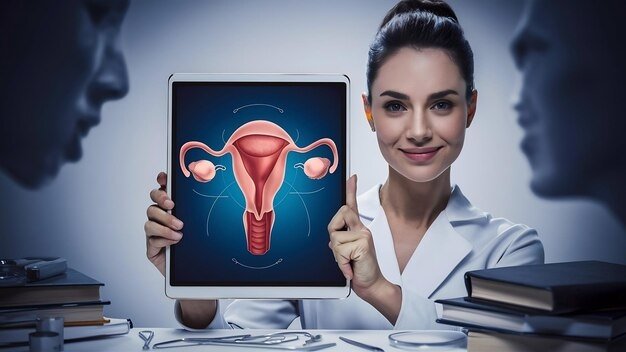You may be diagnosed with silent endometriosis as part of comprehensive assessments used to determine the cause of your infertility. Endometriosis has various symptoms, such as pelvic pain and discomfort during sex or bowel movements. The condition can also be silent, meaning it doesn’t exhibit obvious symptoms. Here are a few treatment options for silent or asymptomatic endometriosis:
Medical Management
Hormonal treatments are often the first line of management for endometriosis. These therapies involve introducing hormones into your body to control imbalances caused by the condition. Normal endometrial tissues grow inside the uterus in preparation for fertilization and implantation. When these steps don’t occur, the tissues are shed during menses. Endometriosis occurs when the endometrial tissues grow outside the uterus, such as in the pelvic cavity, around the ovaries, or inside the fallopian tubes.
Normal and abnormal growths and shedding are regulated by estrogen and progesterone, which are reproductive hormones. Birth control pills, hormonal IUDs, and gonadotropin-releasing hormone agonists may be used to suppress estrogen. Low estrogen levels slow down or stop endometrial growth, effectively treating silent endometriosis. Hormonal therapies are suitable if you’re not actively trying to conceive because they’re contraceptives. They help stabilize the reproductive environment for a while before you attempt to conceive. Doctors can also prescribe pain relievers for mild symptoms.
Surgical Intervention
Although asymptomatic endometriosis may not result in physical discomfort, the condition can have fertility implications. Doctors usually recommend surgery when conservative approaches fail. Laparoscopic surgery is often used to diagnose and treat endometriosis by removing the abnormal growths. Doctors first take a sample of the tissue to confirm the presence of endometriosis. They use a tiny instrument with an attached camera to guide the biopsy and surgical removal.
Surgery restores normal pelvic and reproductive anatomy, clearing blocked pathways and tissue buildup. Laparoscopy is a minimally invasive procedure that may help improve fertility outcomes, especially when undergoing IVF treatment. Its use cases are for those actively trying to get pregnant or those with large ovarian endometriomas or deep endometriosis. Removing the lesions and hidden tissues also helps prevent further progression and reduces the risk of future complications. Doctors are able to combine surgical removal with medication to reduce the chances of future growths.
Fertility Treatments

Endometriosis without symptoms is often diagnosed after unexplained infertility. The condition doesn’t have obvious symptoms, but it usually affects fertility, especially for growths around the ovaries or inside the fallopian tubes. If you actively seek to get pregnant, hormonal therapy isn’t an option.
Surgery may also not be ideal for some women or sufficient to support natural conception. Fertility doctors recommend fertility treatments, such as assisted reproductive technologies (ARTs). You may undergo IVF after surgical treatment to increase the chances of successful implantation.
IVF involves extracting sperm and eggs, completing external fertilization, and transferring viable embryos back to the womb. Doctors may also use intrauterine insemination (IUI), donor sperm and eggs, and surrogacy. These options help you start a family despite being diagnosed with endometriosis. Doctors usually address endometrial lesions through surgery before starting fertility treatment. Some doctors also combine hormonal therapy before IVF to enhance egg quality and implantation rates. Unlike contraceptives, this therapy is focused on optimizing hormones that support egg maturation, ovulation, and implantation.
Ongoing Monitoring
Even when symptoms are mild or absent, doctors recommend ongoing monitoring after an endometriosis diagnosis. They schedule regular pelvic exams, ultrasounds, and follow-ups with a gynecologist to help track progression or recurrence. You can also take regular BCL6 tests to check for markers of endometriosis. BCL6 tests are part of a comprehensive diagnosis used to determine if endometriosis is the underlying cause of unexplained infertility or failed IVF. If the test is positive, doctors can schedule laparoscopic biopsies for confirmation. Regular BCL6 tests enable early intervention, allowing doctors to slow the progress of endometriosis. Ongoing monitoring supports preventative strategies that focus on maintaining hormonal balance and reducing inflammation. They’re used to reduce the chances of future complications caused by widespread or deep endometriosis.
Find Out Your Next Steps After Silent Endometriosis
Endometriosis may remain silent for years, resulting in late diagnosis. To prevent the condition from progressing and potentially impacting your fertility or physical health, undergo regular tests. A BCL6 test can provide valuable insights that help inform proactive interventions. Get tested today to learn more about silent endometriosis and available treatment options.
Medical Disclaimer
This information is provided for educational purposes only and is not a substitute for professional medical advice, diagnosis, or treatment. Always seek the advice of your physician or another qualified healthcare provider with any questions you may have regarding a medical condition. Never disregard or delay seeking professional medical advice because of something you have read here.
References
- Medical News Today. Silent Endometriosis: Symptoms, Tests, and Treatment. Published November 2023.
- Bonavina G, et al. Endometriosis-associated infertility: From pathophysiology to treatment. Frontiers in Endocrinology. 2022.
- Nezhat C, et al. BCL-6 Overexpression as a Predictor for Endometriosis in Patients Undergoing IVF. 2020.
- ReceptivaDx. Why Is It Called Silent Endometriosis? 2022.
- National Institutes of Health. The Prevalence of Endometriosis in Patients with Unexplained Infertility. 2024.
- National Institutes of Health. A Systematic Review on the Prevalence of Endometriosis in Women. 2024.

